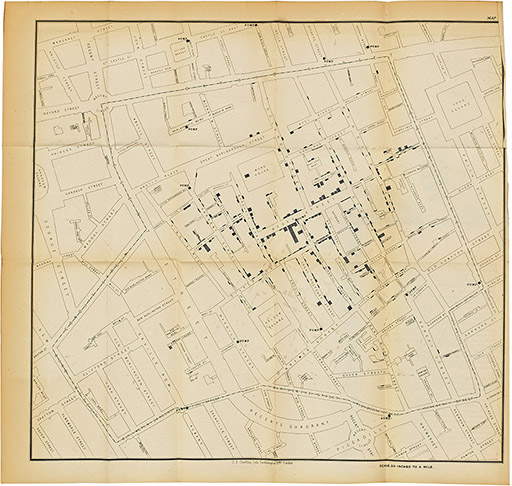8 Framework for a global development mindset
Thinking systemically requires a both/and mindset. Working with a complex situation requires looking at individual parts of the whole – you cannot deal with everything, so you must draw a boundary somewhere. It is critical to keep a healthy ‘part-whole’ balance, and to work with the parts in such a way as to create an approximation of the whole.
The process of looking at the parts of a problem and breaking it down in order to gain understanding of a larger whole is one that researchers and practitioners continually grapple with. There is always a danger that the dots do not get joined up and valuable insights are not realised at opportune times.
The story of cholera is one where investigators, both past and present, work at different levels of complexity. It took careful detective work and study of the distribution of outbreaks of the disease for the British physician, John Snow, to identify the source of the problem in London in 1854. He did not know what caused the disease, but his findings provided the evidence that led to an effective intervention – removal of an offending water pump.
The causative organism, a bacterium, was identified in 1854 by the Italian physician, Filippo Pacini, although this work was unknown to John Snow (History.com 2020). It took some years before the work of different investigators was brought together and a more complete picture built up of the pathology of cholera and its spread. Taking a step back and looking at the disease organism in its natural setting provokes further questions and inquiry, such as why did a bacterium, which is present widely in coastal habitats and been around for thousands of years, evolve into a virulent strain and go on to cause devastating pandemics (Boucher et al., 2015). Similar questions can be asked regarding the emergence of a new type of coronavirus in 2019 and its spread to become a global pandemic. In gaining a more complete understanding of such situations, it is necessary to isolate the parts and study them in minute detail. It is also essential to look at the parts in context and consider the complex interactions between them and their environment.
In the fields of complexity and ST, a wide range of methodologies, techniques and tools have been developed to support thinking, and in seeking some understanding of complex situations. Such approaches are used by scholars and practitioners in order to reduce the complexity as it is impossible to deal with the whole in any meaningful detail but seek to maintain an awareness of the bigger picture. A framework is one such conceptual tool, one that gives insights and helps in exploring possibilities. PASH is a conceptual framework developed for the Global Development qualifications offered by The Open University. It brings into juxtaposition four key concepts, Power, Agency, Scale and History (PASH) that are important in making sense of global development and complex global development issues such as poverty, migration and environmental sustainability.

